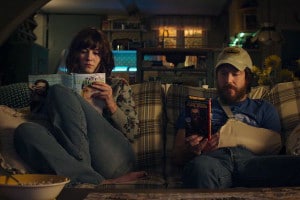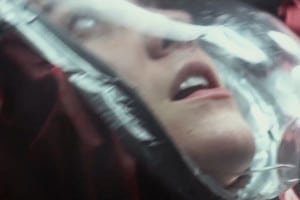5 Lessons Learned From 10 Cloverfield Lane
Two months ago, most of the movie-going world did not know that 10 Cloverfield Lane even existed. When the trailer premiered in front of 13 Hours: The Secret Soldiers of Benghazi, the internet seemed to be confused. There’s a sequel to Cloverfield? What does 10 Cloverfield Lane mean? Is that John Goodman? It comes out in two months?!

Cloverfield was met with modest praise, although most were underwhelmed by the experience and felt tricked by the marketing. The film has developed a small, yet vocal, cult following as there have always been teases of a sequel, but most believed that too much time had past for the studio to cash in on the once rabid Cloverfield craze.
Well those people underestimated the power of J.J. Abrams, Dan Trachtenberg, and the marketing team at Paramount. With 10 Cloverfield Lane’s strong debut ($24.7 million in its first weekend) and overwhelmingly glowing reviews (it sits at 90% on RottenTomatoes), there are plenty of things studios can learn from this sequel’s success. Here are five lessons learned (in descending order) that all Hollywood studios should take note of (warning: minor spoilers for 10 Cloverfield Lane ahead):
Lesson #5: Time Is Not Always Everything
Eight years have past since Cloverfield. Logic would say that now would be a terrible time to release a sequel to a film that is not even a decade old. Eight years is in that awkward spot where it’s been too long since the first one came out, but not long enough to earn nostalgic points for certain audience members. Most studios would be too afraid to release a film eight years after the original came out, especially without an overly aggressive marketing campaign.
J.J. Abrams and Paramount were not afraid, however, and knew that if they crafted a well made thriller, they could market it to all audiences, even those who have not seen the first. They also knew that they could not just rely on the name “Cloverfield” to sell tickets. Too many studios rely on the franchise’s name to sell tickets, but none of the marketing for 10 Cloverfield Lane relies on anything established in Cloverfield. There are no monsters, no found-footage, no returning characters, or no title card saying, “The Next Chapter in the Cloverfield Saga.” Just an intriguing trailer that seemingly has nothing to do with its predecessor other than its title. Abrams and Paramount relied on their film’s premise rather than Cloverfield’s legacy, and it paid off for them.
Lesson #4: Audiences Like Surprises
This is a popular, and mostly true, opinion on the internet: trailers nowadays ruin a lot of surprises in movies. If you watched the trailer for last year’s awful Terminator Genisys, then chances are you were pretty heated when you realized that the movie’s biggest twist was given to you before you had even seen the movie. There are countless examples of this, but the question is why do studios do this? The answer is pretty simple: they 
10 Cloverfield Lane did pretty much the opposite. The first trailer shows almost absolutely nothing besides three people hanging out in this odd, but comfortable looking bunker. The end of the trailer shows a sizzle reel of action shots, but almost nothing is given away. In fact, just when the biggest twist is about to be revealed, the trailer cuts to black and shows the title (which is arguably the aforementioned twist). That’s how you sell a movie; tell your audience, “hey, we have surprises in our movie, but we are not going to show you just yet.” It intrigued audiences, and although some may argue that having Cloverfield in the title is both a spoiler and a marketing tactic, none of the film’s biggest reveals are in the marketing.
Lesson #3: It’s Okay to Be Different
Wait, Cloverfield is a found-footage monster flick so that means its sequel has to do the same thing, right? As 10 Cloverfield Lane proves, no it doesn’t. Many saw Cloverfield’s found-footage as a gimmick and tiring (I don’t necessarily agree), so the talk about a Cloverfield sequel seemed to always revolve around how the filmmakers would work found-footage into the story again. Well the filmmakers found a good solution, you don’t.
By instead focusing on creating a well-developed and satisfying story, the filmmakers decided to expand the “Cloververse” in a completely new way. They weren’t tied down by any gimmicks or anything that had come before them. Dan Trachtenberg was able to tell the story he wanted to without worrying about shoehorning a gimmick into his film. This is something that plagued another Paramount franchise, Paranormal Activity. Explaining the found-footage aspect of the story got sillier as the series went on and really dragged it down. That certainly did not happen here.
Lesson #2: Not Every Little Thing Needs to Be Connected or Explained
I am a huge Marvel Cinematic Universe fan. That being said, sometimes the universe seems to get bogged down with connections and it takes away from the individual stories the films are trying to accomplish. This might seem to be an unfair comparison since the MCU currently stands at twelve films (and four television series), while the “Cloververse” only consists of two films, but the outline for these universes are drastically 
Cloverfield and 10 Cloverfield Lane are two completely different films and share almost next to nothing in common. No characters from the first Cloverfield show up or are mentioned in 10 Cloverfield Lane, the monsters are completely different, and there are only minor hints at a larger story. 10 Cloverfield Lane does not hinge on that, however. Studios would usually force the filmmakers to shoehorn in a reason why this film is connected to the first one or why it exists in the first place. Instead, Paramount and Bad Robot decided to go the anthology route of telling (mostly) self-contained stories, and it works perfectly for both movies. Some would argue that the tie to the original Cloverfield is the weakest part of 10 Cloverfield Lane, and I would mostly agree, but the fact that the majority of the film works amazingly on its own should be celebrated. Other studios should notice that telling individual stories can get audiences excited and not every little thing needs to be connected.
Lesson #1: Bigger Is Not Always Better
Cloverfield had a budget of $25 million in 2008. 10 Cloverfield Lane has a budget of $15 million in 2016. While Cloverfield did have a bigger opening weekend ($40.1 million versus $24.7 million), 10 Cloverfield Lane could prove to be more profitable to Paramount in the long run as it has enjoyed stronger word of mouth and could hold much better than the original Cloverfield.
Whether it is more successful than Cloverfield does not really matter as 10 Cloverfield Lane is already a big hit for Paramount. Most studios seem to think that pumping more money into a sequel means that they’ll make a bigger profit (Nick Offerman makes fun of this in 22 Jump Street), but that is not always the case. There are countless examples of studios spending more money on a sequel and then end up losing more money in the long run.
This did not happen with 10 Cloverfield Lane because the story Dan Trachtenberg and the writers wanted to tell did not call for a big budget. They instead focused on characters and creating tension with their plot, and even though the third act does feature many special effects shots, the film never gets too big and the modest $15 million budget proves that. It was bold for Paramount and Bad Robot to go smaller because that is what the script called for and not force the filmmakers to make their film larger so it would be easier to sell.
Here’s to hoping they learned their own lessons and will continue their “Cloververse” the best way they seem fit.
Scott Davis
Latest posts by Scott Davis (see all)
- The Preview Reel: Incredibles 2 and Tag - June 13, 2018
- The Preview Reel: Action Point & Adrift - May 30, 2018
- The Preview Reel: Solo: A Star Wars Story - May 23, 2018


